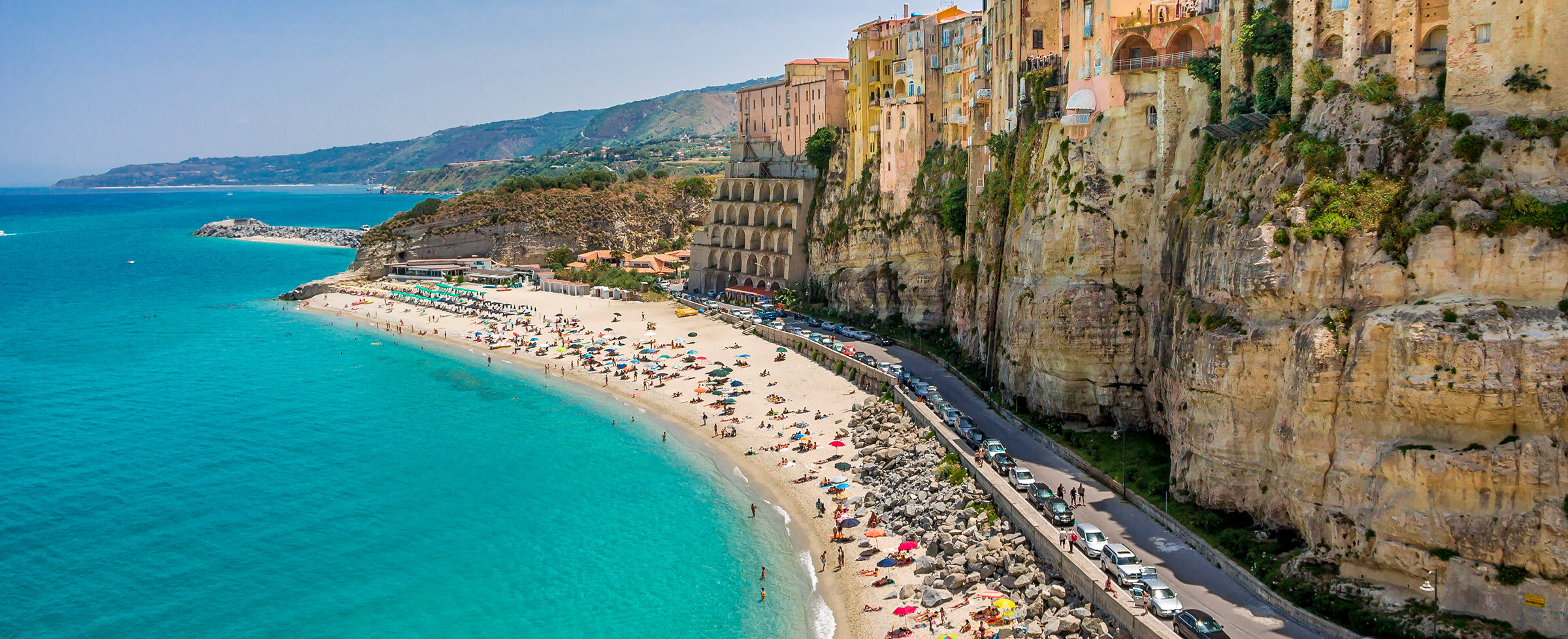Costa degli Dei is the Calabrian sea paradise
If any divinity really wanted to go down on Earth to dive, he would probably take a trip in Costa degli Dei in Calabria (province of Vibo Valentia), top sea destination for European and American tourists.
The best place to take a swim.
Visit Tropea and Capo Vaticano
Tropea and Capo Vaticano have been the privileged choice of millions of tourists for decades, a destination especially selected for true swimmers and divers.
Costa degli Dei is also a very popular destination for sailors and sea crossing lovers. The possibility of mooring, and leaving for a holiday in the nearby Aeolian Islands, is an evergreen tourist attraction.
Tropea triumphed in the 2021 TV edition of Il Borgo dei Borghi. Through great television images and brilliant storytelling, it has also managed to communicate its important architectural and cultural heritage to the public. Tropea has gone beyond the immense “gold reserve” of the coast.
A little further south, Capo Vaticano, the westernmost Calabrian tip on Tyrrhenian Sea, is the postcard of the seaside vacation in Calabria.
The most beautiful sea, in almost 800 km of the Calabrian coast.
Spilinga the capital of ‘nduja
In Spilinga you are in the capital of ‘nduja, a very Calabrian sausage – it is made with a strong chili pepper! – perfect for spicy addicted and in general for local food lovers.
Pork meat is combined with Calabrian pepper in the right doses. Pepper is able to give an added value to the mixture of bacon, lard, and other finely chopped up pork parts. After aging and after a light smoking, ‘nduja is ready to combine with pasta, pizza, bruschetta, meatballs, rice balls and a lot of dishes.
Discovering Zungri, the stone village
On the plateau of mount Poro there is a rock site that attracts many tourists: Zungri. Dozens of caves dating back to the Middle Ages are an example of acute adaptative intelligence to the conditions set by Nature.
In the provincial capital, the city of Vibo Valentia
Hipponion was the “city” that once stood in the Vibonese territory. It was one of the liveliest colonies of Magna Graecia, mainly influenced by the powerful Locri.
Vibo Valentia is the name that dates back to the age of the Roman Empire, even if the city had the name of Monteleone until 1928.
In Vibo Valentia you find a nice historical center, enhanced by noble palaces restored in the 19th century.
We recommend visiting the “Vito Capialbi” state archaeological museum, set up inside the Norman-Swabian castle.
A monastery and a weapon factory in the middle of the Serre wood
A2 motorway junction Vibo-Sant’Onofrio is your reference point on the map.
From here you begin an exciting journey in the hinterland, landscape characterized by wooded mountains – Serre Vibonesi (or Calabresi).
Your goal has got to be a magic place full of mysteries: the Certosa di Serra San Bruno.
It is surrounded by a woodland magical environment, a paradise of meditation and silence. Monks’ life and the story of saint Bruno from Cologne still fascinates scholars and religious all over the world.
Close to Serra San Bruno, in the territory of Mongiana there is the museum of the Borbone Royal Ironworks. It is a site of industrial archeology, which is evidence of the manufacturing power (arms factory) of the former Kingdom of the Two Sicilies.
Typical biscuits in Soriano Calabro
Coming back to the coastline, don’t miss a visit to Soriano Calabro.
This is a pretty village rich in history and religiosity, famous for its sweets based on honey and flour called mostaccioli or mastazzoli, known in numerous variations including curious anthropomorphic and zoomorphic pieces.
Pizzo, the Tartufo ice cream and the small church of Piedigrotta
Then, a very happy end of the Calabrian west coast trip can be planned in Pizzo Calabro. Here a delicious stop to taste the ice cream known as Tartufo (Truffle), the pastry making masterpiece that “gluttons” must eat! It’s a Calabrian sweet idea.
In Pizzo Calabro you must visit the small church of Piedigrotta, a few kilometers before entering the town, with access from a staircase that reaches the beach. Yes, because the church was built inside the rock on the water’s edge!!

